A Certified Naturally Grown Farm - Saint Marys, Pennsylvania
Spring 2020
Posted on June 16, 2020 by Joshua

Apologies for the lapse in our weekly postings. We’ll be returning to those going forward. We just wanted to post an update of where we are at so far in 2020.
Thus far we are on schedule which is pretty amazing considering the weather thus far in Spring, as well as having only one full-time “employee” and either volunteer family help or some friends who’ve worked for us at a small fee. But here’s where we stand.
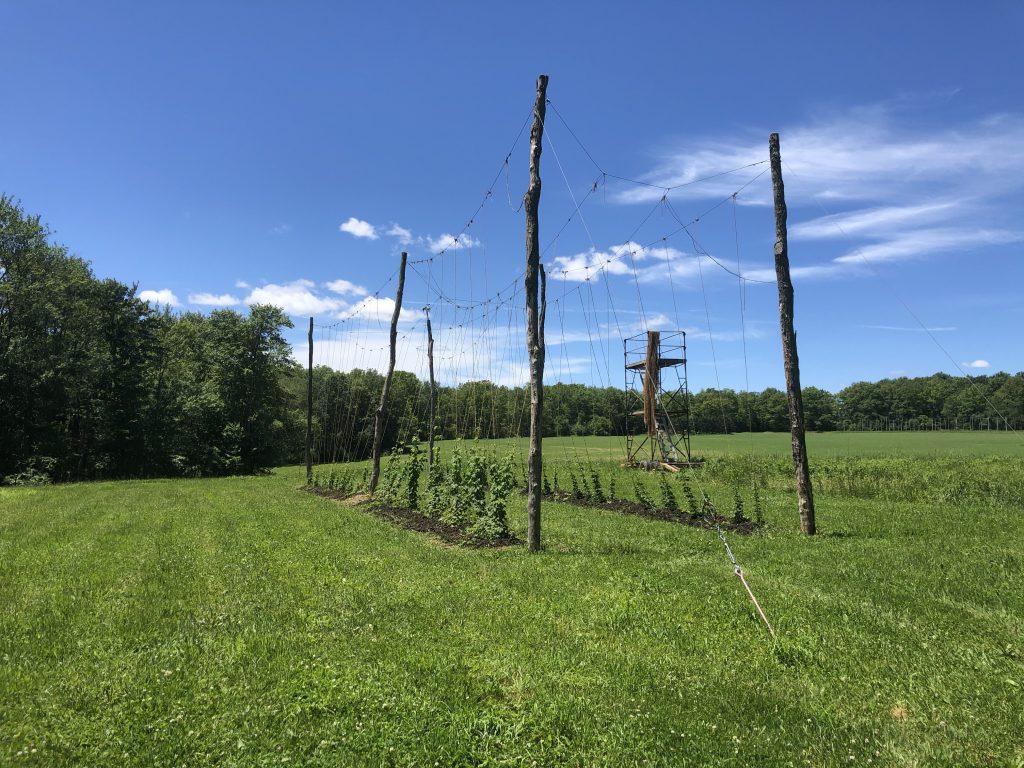
Winter didn’t seem to want to leave this year. Even in early June, we saw temps hit freezing overnight twice. Along with what seemed to be above average wet weather, it was difficult to get activities started on time in the hopyards: “crowning”, stringing, training, etc. As most of our processes are hands-on or manual, they can be very time consuming and backing schedules up due to the weather just compounds issues.
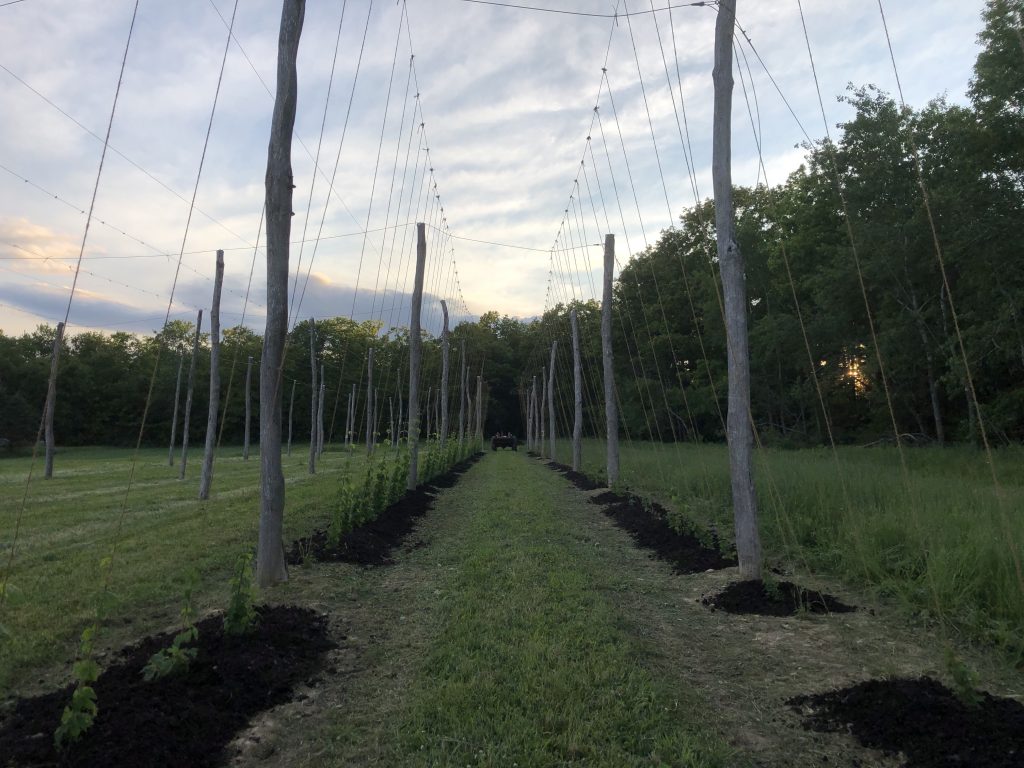
We did make some strides to improve efficiencies. We’ve picked up some used equipment in the last two years that we’ve finally been able to put into use. This includes a 15-gallon and a 25-gallon set of sprayers, thus we can decrease the amount of time it takes with the backpack sprayer to apply both bio-fungicides and the insecticides.
In addition, in the Fall of 2019, we started a practice we’ve wanted to implement for a number of years. This includes re-hilling our hops hills to build back the organic matter to the hills, decrease the weed pressure, as well as to continue to raise their height above the alleys in between thus shedding moisture and eliminating the “ponding” we’ve seen in the large hopyard. We will also be relocating two sections of each of our five rows to the east end of the large hopyard. The east end wets out every Spring and those sections either produce very little or no bines.
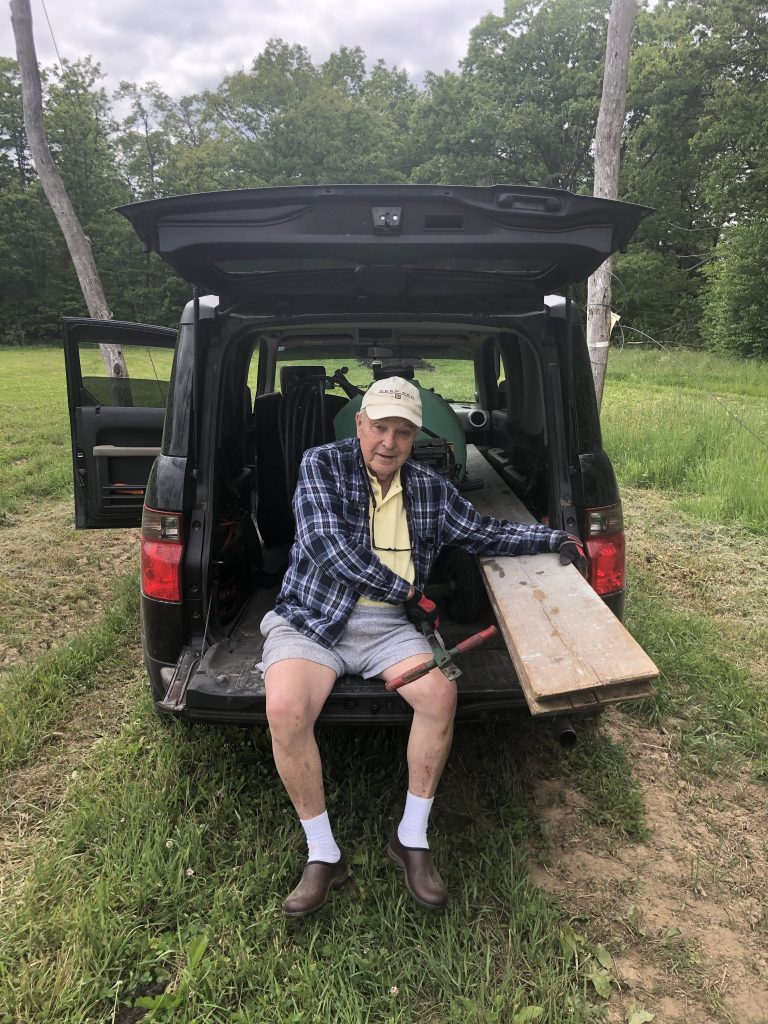
Dad Going For A Ride 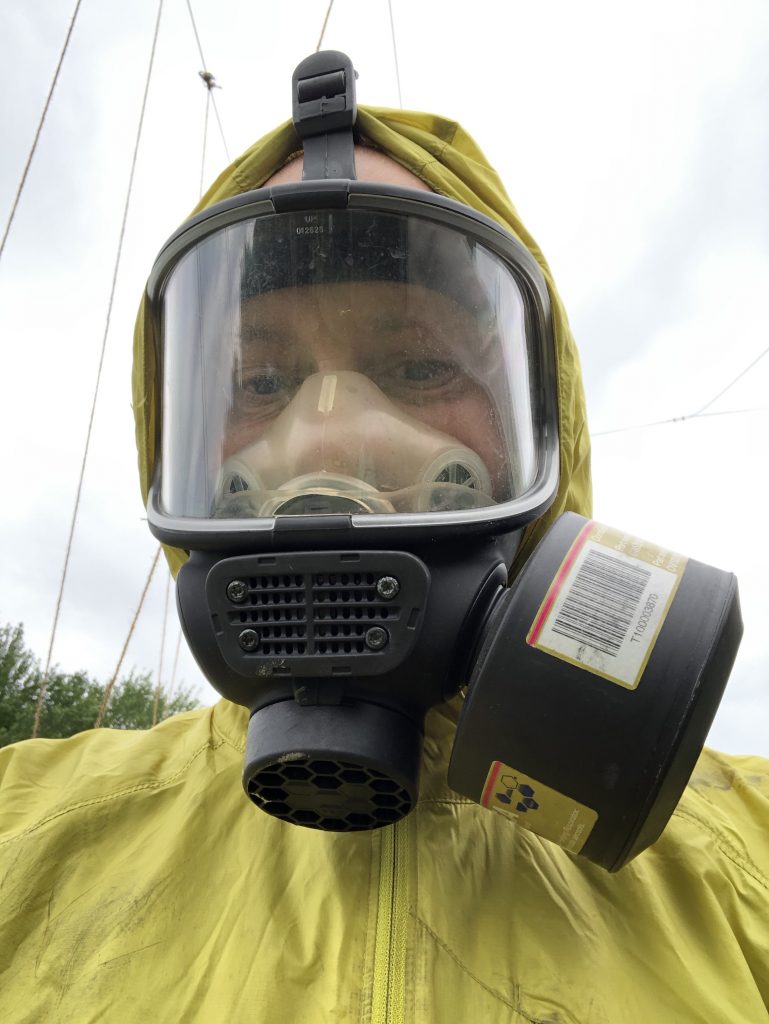
Mask Is Essential to Avoid Water Vapor Intake 
First Round of Fertilizer 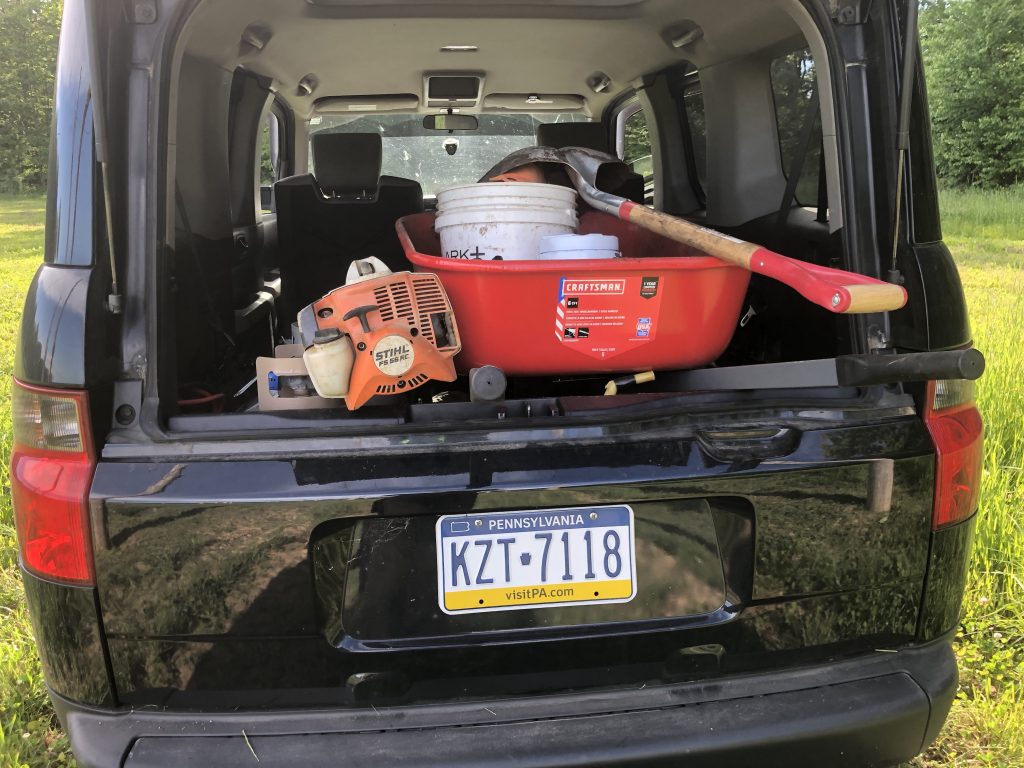
“Ele” Does It All 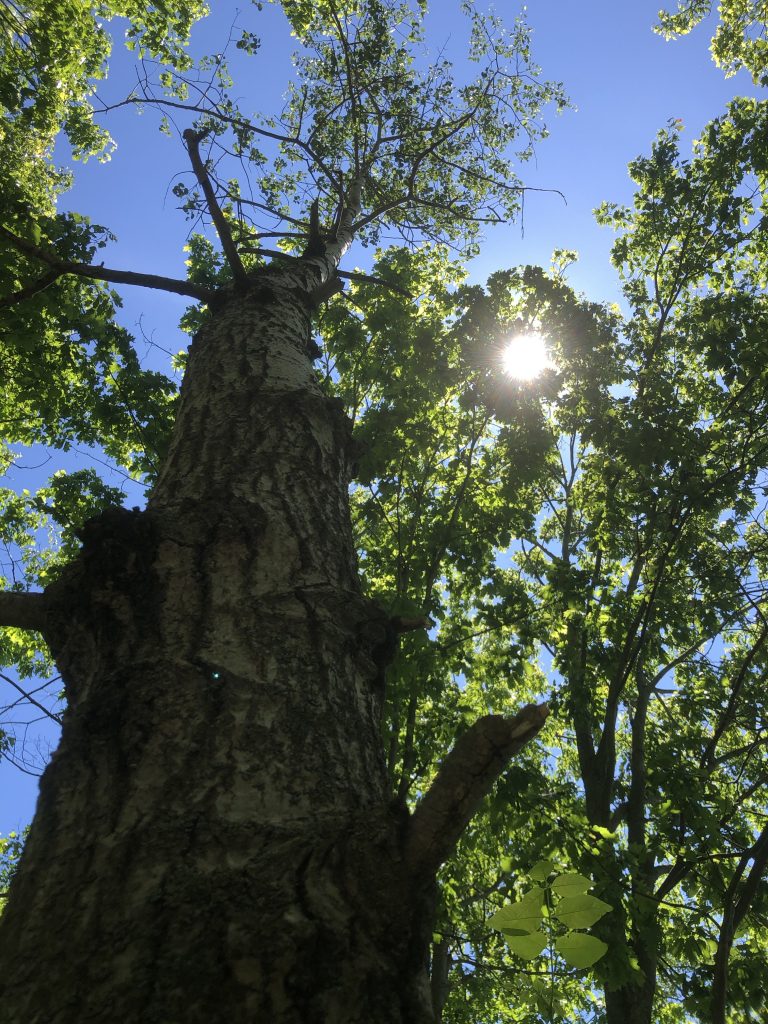
The Weather Gods Are Pleased 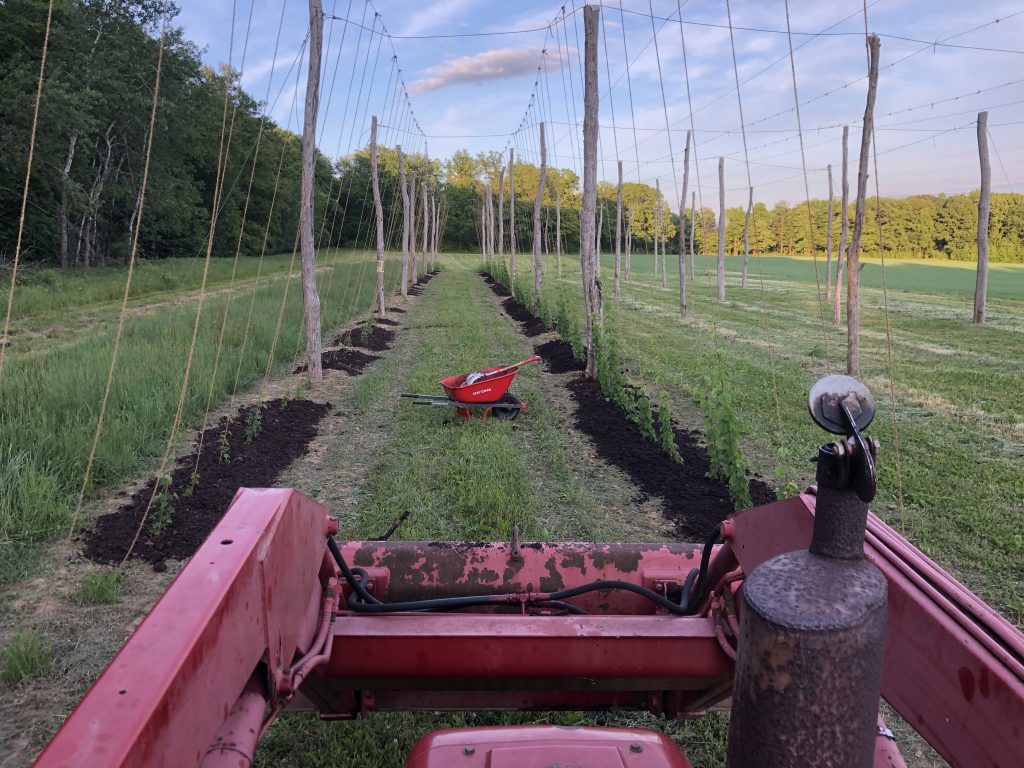
Moving Through the Large Hopyard Mulching with Compost 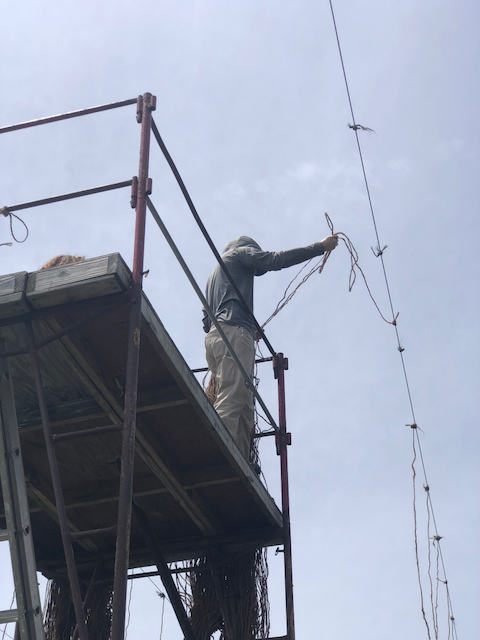
Isaac Stringing Away 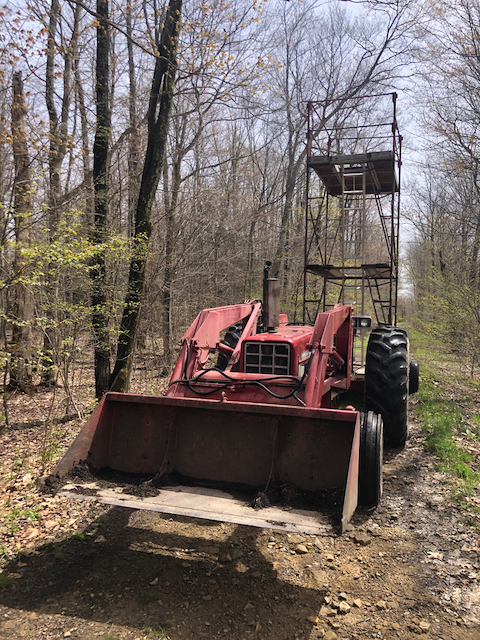
Siege Tower Makes Its Way to the Large Hopyard 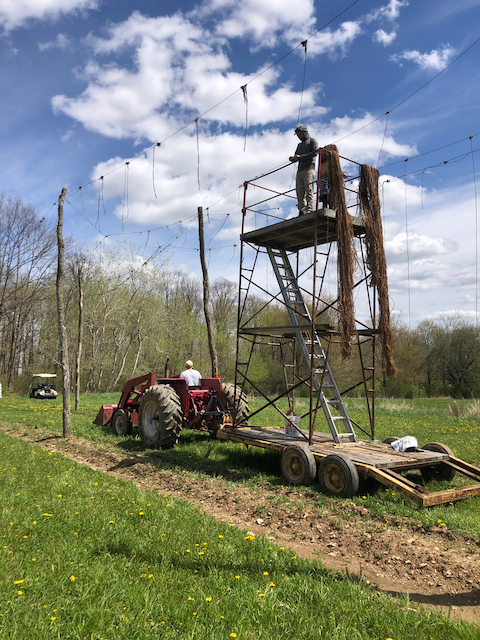
Stringing the Small Yard 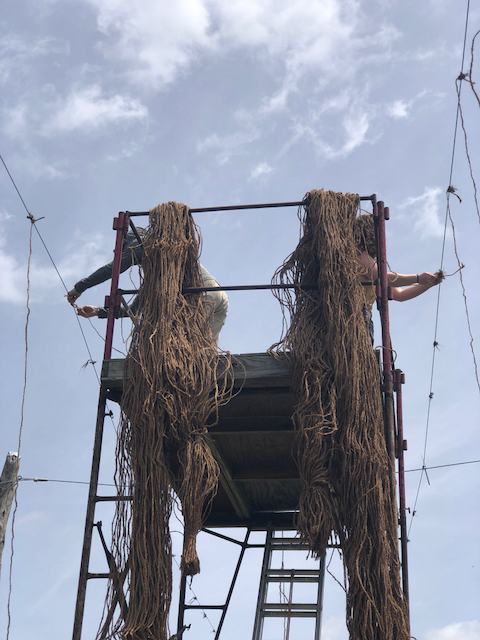
App House Buddies Ali Campbell and Isaac Smith Rocking the Stringing
Now into early to mid-June, and all the hops have been strung, trained, weeded, and compost mulched. Additionally, a 2-3 week fertilizer routine has begun to help with height growth and burr development – this will end in early July as that’s standard practice in hopyards as the bines transition to putting energy into sidearm development and cones.
We were blessed to find a great local source for compost. Windfall Farms located here in Saint Marys has graciously allowed to let us transport 2 tri-axle loads of their horse manure for our use. For over a month, we turned these piles and monitored the temperature to help the piles properly compost. We will continue this arrangement as it’s just what we need to add fertility, to help control weed growth and to continue to increase the organic matter in our heavy clay soils.
This past weekend, we also had our annual Certified Naturally Grown (CNG) inspection and all turned out well. We had our documentation all in place (organic certificates for our amendments, timelines, organic practices, etc.) and we should be getting the official seal of approval here shortly once they’ve reviewed our inspection materials. Special thanks to Jane Olson of the Elk County Master Gardners for taking the time and effort to conduct the inspection. We look forward to working with this new group to hopefully rotate through a new batch of inspectors each year in a mutually beneficial process.
And beginning in a few weeks, we will begin our NRCS irrigation project that will allow us to make use of a solar pump to move water from one of the wells we dug a few years back, pump it to a large holding tank and then use gravity to deliver water and fertilizer (“fertigation”) both our large and small hopyards. This will make an incredible difference in the yields we’re certain. In addition, we will be replacing three of the five varieties of hops in the large yard that never really seem pleased with our Mid-Atlantic soils.
So that’s where we’ve been, where we are at, and where we are going in 2020. Please continue to follow along!
Category: Blog, Hops, Hopyard, Marketing & Social Media, Standard Post With an Image, Uncategorized

